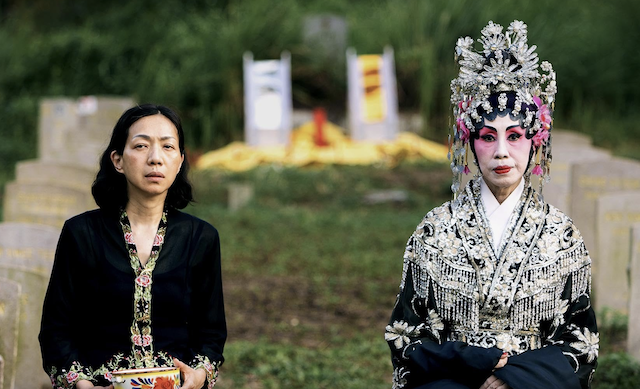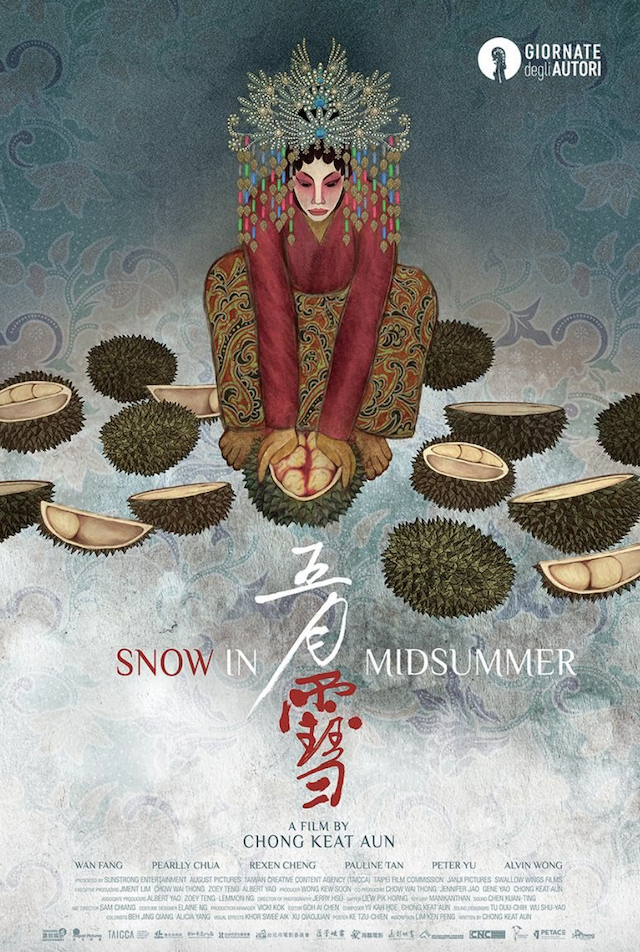
©Courtesy of New York Asian Film Festival
Snow in Midsummer, a film by Malaysian director Chong Keat Aun, is among the works being screened at the 2024 New York Asian Film Festival. It had earlier premiered at the Venice International Film Festival and won the award for best Chinese-language film in the Young Cinema Competition at the 48th Hong Kong International Film Festival.
For those not familiar with the historical cultural background of this film, however, Snow in Midsummer can be quite baffling. While it often seems disjointed and meandering, it is possible to piece together enough information to understand it has something to do with the way that despotism has wreaked havoc on so many innocent victims over the centuries.
Here’s a brief sketch of the backstory: In May of 1969, Kuala Lumpur was rocked by violence directed against the Chinese minority in Malaysia. A Cantonese opera troupe happened to be performing in the capital during that tense moment. As unruly mobs swarm through the streets seeking for blood, a schoolgirl named Ah Eng takes refuge with her mother in the theater during a performance of a classic Ming-dynasty tale about political corruption and injustice. The opera eerily mirrors what is going on around them: One of the most striking scenes depicts a long-ago incident when a ruler inadvertently drinks a woman’s blood after she accidentally cuts herself while preparing a meal for him.
The first part of the film depicts the turmoil around the 1969 massacre that has largely been erased from official accounts but not from the memories of those affected. In the second part, set in 2018, Ah Eng (played admirably by Wan Fang), returns to the capital to seek the truth about what happened to her family half a century earlier. Her quest leads her to a cemetery attached to a leprosarium, where she suspects family members may be buried in unmarked graves.

©Courtesy of New York Asian Film Festival
These are but a few of many examples of “art imitating life” in Snow in Midsummer as it juxtaposes the two linked worlds of artifice and reality. Again turning to the film’s official synopsis, we learn that “This is the harrowing backdrop of Chong Keat Aun’s shattering masterpiece, a film that excavates the buried traumas of Malaysia’s notorious 513 incident. Chong audaciously interweaves the opera’s melodrama with the real-life tragedy unfolding in the streets, creating a dreamlike collision of art and atrocity.”
If only we didn’t need to turn to the synopsis to figure this out. But that is, after all, a part of Chong Keat Aun’s message: to remind us of the perils of living in the not-so splendid isolation of our narrow bubble-silos. The final scene, in which Ah Eng is comforted by a grieving widow in the leprosarium’s cemetery, is a powerful and poignant reminder of our connectedness in spite of malice and xenophobia.
As film’s synopsis concludes: “With its haunting imagery and devastating emotional impact, Snow in Midsummer is both a powerful act of remembrance for a forgotten massacre and a trenchant exploration of the scars left by sectarian violence. It’s a film that sears itself into your memory, as indelible as the history it commemorates. In Chong’s hands, the past isn’t dead; it isn’t even past.”
Chong Keat Aun is to be commended for raising consciousness about the cruelty and injustice directed toward the unfortunate players in this tragic episode. While many viewers will have trouble making sense of a lot of the references and allusions in the film, there are enough visual cues to indicate that something is not quite right.
Rating: B
Check out more of Edward’s articles
If you like the review, share your thoughts below!
Here’s the trailer of the film.

